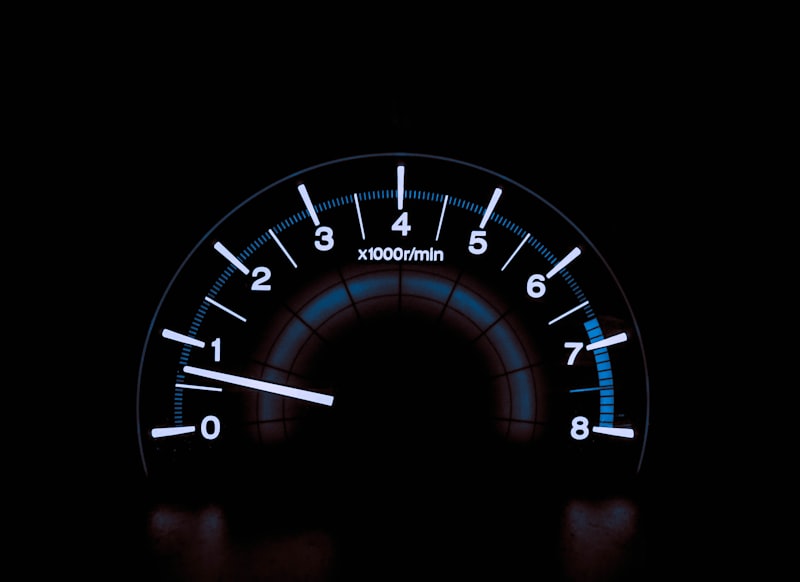Spotting a puddle under your car can send shivers down any driver’s spine. Car oil leaks are not just messy; they can signal potential engine issues if left unchecked. Identifying and fixing them promptly is crucial for maintaining your vehicle’s health and performance.
First things first, locate the source. Check under the car for oil spots or puddles. The color and consistency of the leaked oil can often indicate its source. Fresh oil is amber or brown, while older oil might be darker or blackened due to contaminants. Look around the engine, oil pan, and transmission for visible signs of leakage.

Common culprits include worn-out gaskets, seals, or loose connections. The oil pan gasket, valve cover gasket, and oil filter housing are frequent leak points. Inspect these areas carefully, paying attention to any oil residue or wetness.
If you’re unsure of the leak’s source, clean the engine and affected areas thoroughly. Then, run the engine briefly and check for fresh leaks. Use a flashlight and inspection mirror for better visibility in tight spots.
Repair methods vary based on the issue’s severity. Minor leaks from loose fittings may only need tightening. For gasket or seal failures, replacement is often necessary. Ensure to use manufacturer-recommended parts and follow proper torque specifications during reassembly.
Regular maintenance is key to preventing oil leaks. Follow the recommended oil change intervals and inspect gaskets and seals during routine servicing. Promptly address any signs of oil leakage to avoid potential engine damage and expensive repairs down the road.
Remember, addressing oil leaks early not only preserves your driveway but also extends your car’s lifespan. Stay vigilant, take action promptly, and keep your engine running smoothly.
Spotting Trouble: A Guide to Detecting Car Oil Leaks
Firstly, understand where the oil leaks are occurring. Common areas include the oil pan, valve cover gasket, oil filter, and seals. Look for puddles or stains under your parked car. Fresh oil is usually golden brown, while older oil turns dark and sludgy.
Next, inspect the engine bay. Look for greasy buildup on the engine block or around gaskets. A flashlight can be handy to illuminate tight spaces. Check the oil dipstick and cap for any signs of oil splatter or residue, indicating leaks.
While driving, be alert to any unusual smells. Burning oil produces a distinct odor that suggests leaks or seepage onto hot engine components. Monitor the oil level regularly using the dipstick. A sudden drop in oil level without visible leaks may indicate an internal leak, such as through piston rings.
Consider the color and consistency of the exhaust smoke. Blue smoke suggests oil burning in the combustion chamber, possibly due to a leak from the valve seals or piston rings. This issue requires immediate attention to prevent further engine damage.
When in doubt, consult a professional mechanic. They can perform a comprehensive inspection using specialized tools and diagnostics to pinpoint the exact source of the leak. Prompt repair of oil leaks is essential to maintain engine efficiency and longevity.
By being proactive in detecting and addressing oil leaks, you can save on costly repairs and ensure your car runs smoothly. Regular maintenance, such as oil changes and inspections, also helps prevent leaks before they become serious issues. With these tips, you can confidently monitor your car’s oil system and ensure it stays in optimal condition for miles to come.
Oil SOS: Essential Steps to Find and Stop Car Oil Leaks
Hey there! Dealing with an oil leak in your car can be a real headache, but fear not – we’ve got you covered with some essential tips to help you find and fix those pesky leaks. Imagine your car as a human body; oil is like its lifeblood, keeping everything running smoothly. When there’s a leak, it’s like a cut that needs attention before things get worse. Let’s dive into how you can tackle this issue head-on.
First off, how do you even know if your car has an oil leak? Well, there are a few telltale signs to watch out for. Are there oily patches under your parked car? Does your engine oil level seem to drop faster than usual? Maybe you’ve noticed a burning smell coming from the engine bay? These could all be signs that your car is leaking oil somewhere.
The next step is pinpointing the source of the leak. This might require getting a bit hands-on – check under the hood and underneath the car for any signs of oil seepage. Look for greasy, grimy areas or actual drips of oil. Sometimes, leaks can be sneaky and hide in places you wouldn’t expect, like around gaskets or seals.
Once you’ve located the leak, you’ll need to assess the severity. Is it a minor drip or a steady stream? This will help determine your next course of action. Minor leaks might be manageable with some quick fixes, while larger leaks could indicate more serious issues that need professional attention.
Now, onto the fix. If you’re the DIY type, there are products like oil leak sealants or gasket makers that can sometimes do the trick for minor leaks. Just be sure to follow the instructions carefully. For more serious leaks or if you’re unsure about tackling it yourself, it’s best to take your car to a trusted mechanic who can diagnose the problem and make the necessary repairs.
Remember, addressing an oil leak early can save you from bigger (and more expensive) problems down the road. So, don’t ignore those warning signs! Taking care of your car’s oil system is like taking care of your own health – prevention is key to keeping everything running smoothly.
Next time you suspect an oil leak, don’t panic – follow these steps, and you’ll be back on the road with a healthy, leak-free engine in no time.
Don’t Let It Drip: DIY Solutions for Car Oil Leaks
You’re cruising down the highway, wind in your hair, when suddenly, you notice it: a dark, ominous spot beneath your car. Oil leaks can be a car owner’s nightmare, but fear not! With a bit of know-how and some DIY spirit, you can tackle this issue head-on.
First things first, identify the source. Is it a minor drip or a steady stream? Check under the hood and under the car to pinpoint where the oil is escaping. Common culprits include worn gaskets, loose oil filters, or damaged oil pans.
Once you’ve located the leak, it’s time to roll up your sleeves. Start by cleaning the area around the leak with a degreaser and rag. This step ensures that when you make repairs, you’re working with a clean surface, free from dirt and grime that could interfere with the fix.
For minor leaks, consider using an oil stop-leak additive. These products work by rejuvenating worn seals and gaskets, reducing or eliminating leaks altogether. Simply pour the recommended amount into your engine oil and let it work its magic as you drive.
If the leak is more serious, such as a damaged gasket or seal, you may need to replace the faulty part. Thankfully, many automotive stores carry replacement gaskets and seals specific to your vehicle’s make and model. With the right tools and a bit of patience, you can swap out the old for the new and stop that leak in its tracks.
Remember, regular maintenance is key to preventing future oil leaks. Check your oil levels regularly and schedule routine inspections with your mechanic to catch potential issues before they become major headaches.
Don’t let an oil leak put a damper on your driving experience. With these DIY solutions and a proactive approach to maintenance, you can keep your car running smoothly mile after mile.
Detect, Diagnose, Repair: Mastering Car Oil Leak Detection

To begin with detection, it’s essential to regularly inspect your vehicle for any signs of oil leakage. Look for puddles or stains underneath the car when parked. A shiny, dark patch on the ground could indicate fresh oil. Also, check the engine bay for any visible oil spots or drips on hoses, belts, or the engine block itself.
Diagnosing the source of an oil leak involves a systematic approach. Wipe down any suspected areas and run the engine for a short period to pinpoint the exact location of the leak. This step helps differentiate between minor seepage and more critical leaks that require immediate attention. Pay close attention to the oil pan gasket, valve cover gasket, oil filter, and oil drain plug as common culprits.
Repairing an oil leak depends on its severity and location. Minor leaks from loose fittings or worn-out gaskets can often be fixed with simple adjustments or replacements. For instance, tightening loose bolts or replacing a damaged gasket can resolve many issues. However, leaks from cracked engine components may require more extensive repairs by a qualified mechanic.
Regular maintenance plays a vital role in preventing oil leaks. Keeping up with scheduled oil changes using the manufacturer’s recommended oil type and viscosity helps maintain the integrity of engine seals and gaskets. Additionally, promptly addressing any leaks detected during routine inspections prevents them from escalating into more significant problems.
Leaky Secrets Revealed: Fixing Car Oil Leaks Like a Pro
Firstly, pinpointing the source of the leak is crucial. Start by examining the color and consistency of the fluid. Fresh motor oil tends to be amber-colored and slippery, while older oil can appear darker and thicker. Next, locate where the leak is coming from under your vehicle. Common areas include the oil pan, valve cover gasket, oil filter, and oil drain plug.
Once you’ve identified the source, assess the severity of the leak. Is it a slow drip or a steady stream? This will help determine whether you can fix it yourself or if you need professional help.
For DIY enthusiasts, fixing minor oil leaks can be relatively straightforward. Start by cleaning the engine to get a clear view of the leak. Use degreaser and a rag to wipe down the area around the leak. Next, tighten loose bolts or replace damaged seals or gaskets. Remember to use the correct tools and follow your car manufacturer’s guidelines.
If the leak is more serious or you’re unsure about tackling it yourself, it’s best to consult a mechanic. They have the expertise and equipment to diagnose and fix complex leaks effectively.
Frequently Asked Questions
How Can I Locate the Source of an Oil Leak in My Car?
Learn how to locate the source of an oil leak in your car with our concise guide. Identify common areas such as the oil pan, valve cover gasket, or oil filter housing using visual inspection and tracing oil drips. Look for oil stains, drips, or puddles under the engine. Consult a mechanic if unsure or for repairs.
What Should I Do if I Notice Oil Leaking from My Car?
Learn what steps to take if you discover oil leaking from your car, including checking the oil level, identifying the source of the leak, and seeking professional help if needed.
What are the Common Signs of a Car Oil Leak?
Discover the common signs of a car oil leak with our concise guide. Learn to identify oil spots under your parked vehicle, notice a burning smell while driving, or observe a drop in oil levels. Understanding these indicators helps maintain your car’s performance and prevent potential engine damage.
What Are the Typical Costs Involved in Repairing an Oil Leak?
Learn about the typical costs associated with repairing an oil leak, including parts and labor expenses. Understand the factors that influence repair costs, such as the extent of the leak and the type of vehicle. Get insights on how to budget for potential repairs and what to expect during the repair process.
Is It Safe to Drive with an Oil Leak?
Learn about the risks of driving with an oil leak and whether it’s safe. Understand potential damage to your vehicle’s engine and the importance of promptly addressing leaks to avoid costly repairs and maintain safe driving conditions.


